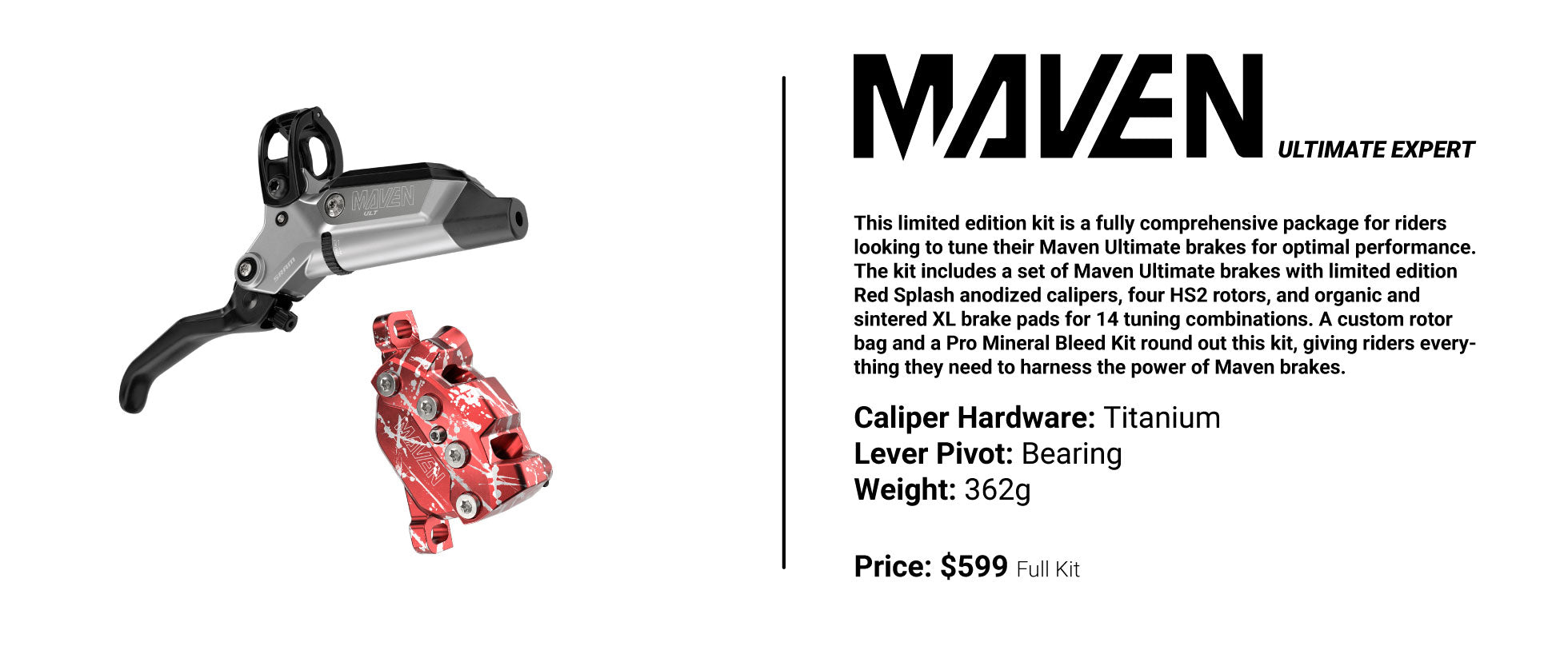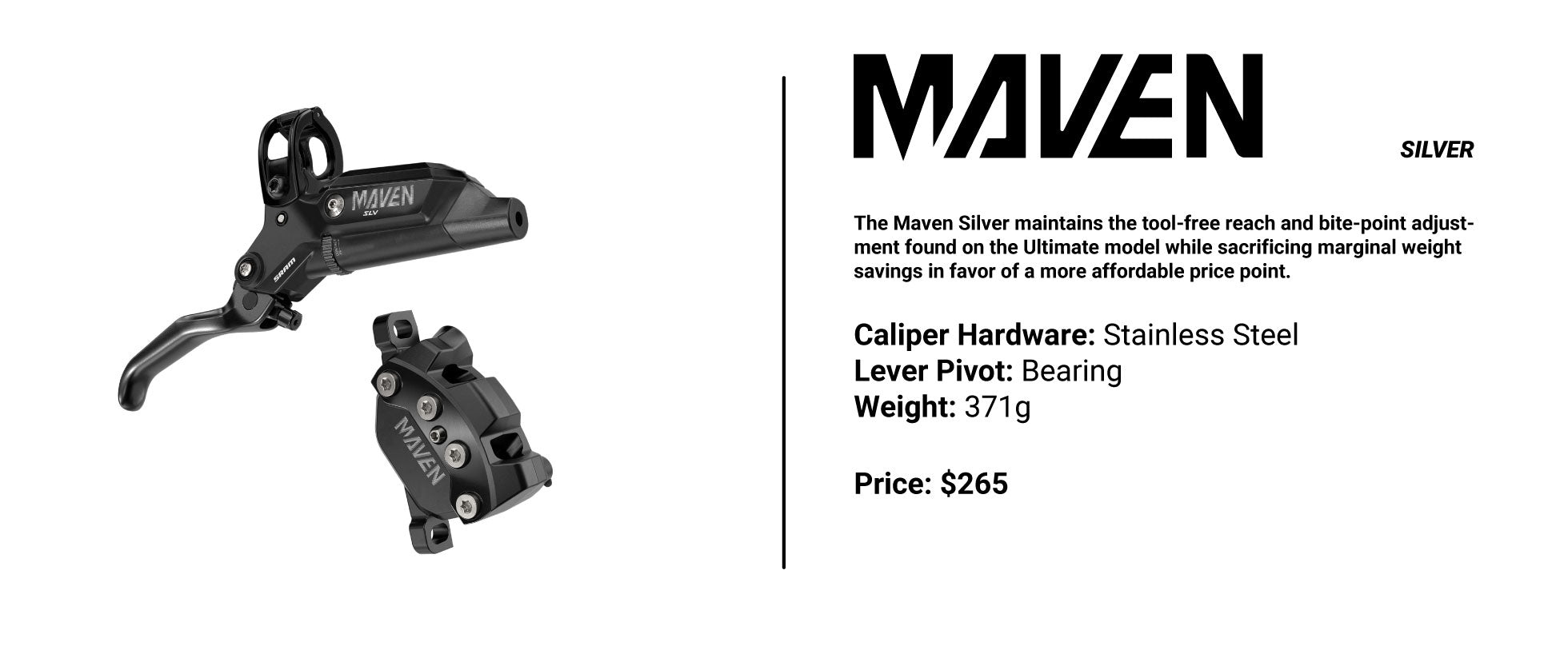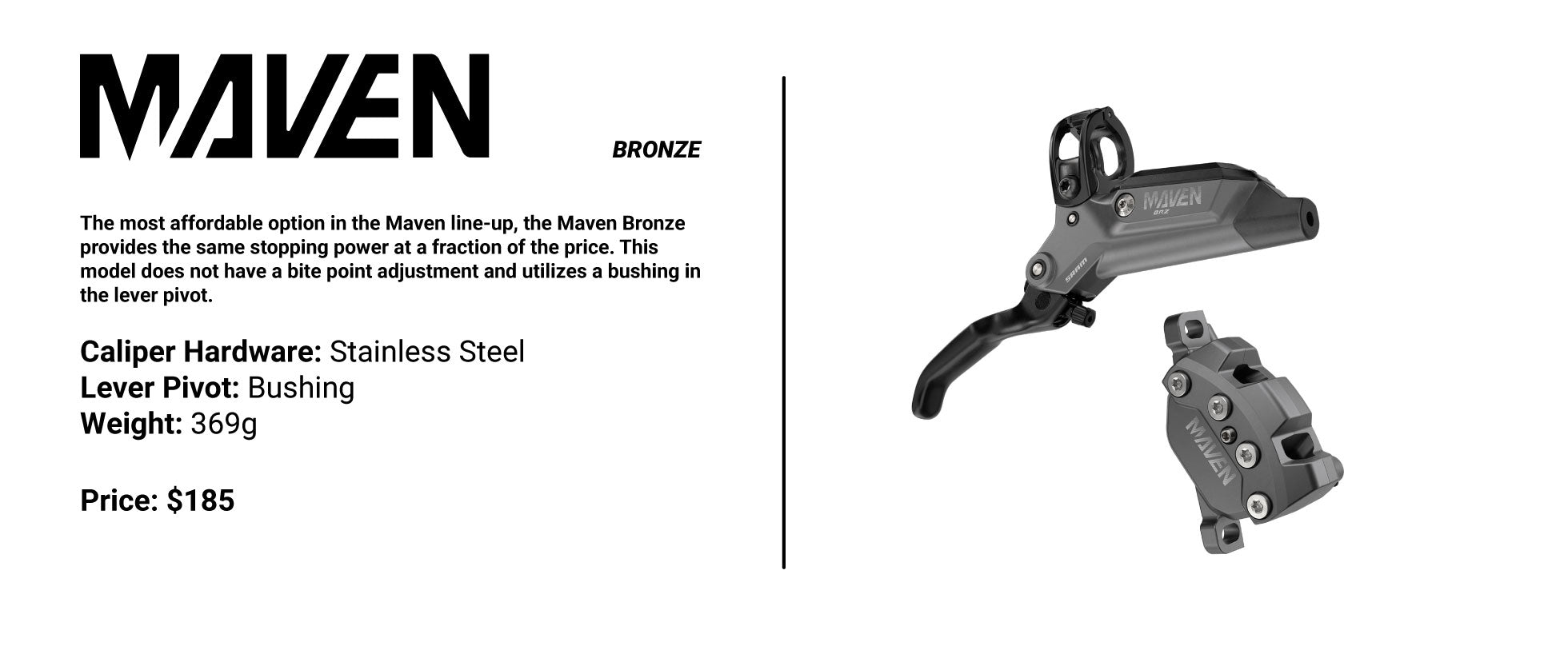Since its initial release in 2017, the SRAM Code RSC has been one of the most widely relied upon 4-piston brakes. Having claimed numerous gold medal results for the world’s fastest racers as well as being a staple on manufacturer-complete builds, it proved itself with its consistent feel and reliability.
While the industry-trusted Code RSC is powerful in its own right, elite-level downhill and enduro riders continue pushing the limits of what is capable on two wheels. Along with the rise of e-bike popularity and the braking demands of these heavier bikes, riders are asking more of their brakes than ever before. SRAM has reacted to the increasing demands of modern mountain biking with their most powerful brake yet, Maven. With a near 50% increase in power over the Code RSC, along with better heat management and fade resistance, the Maven brake enters the SRAM lineup as their premium gravity-oriented option for riders looking for the most stopping power possible.
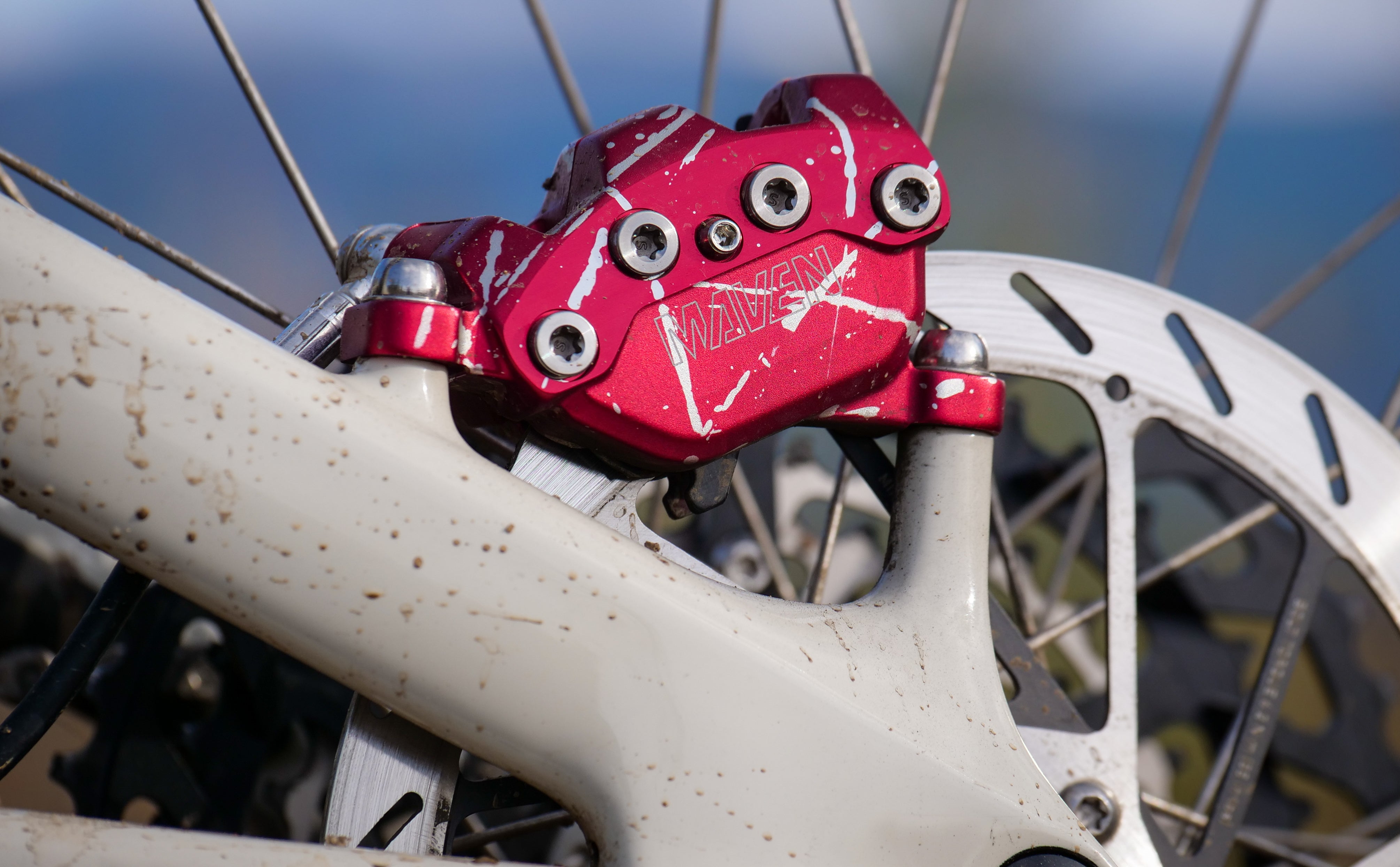
Specs
- Intended use: Downhill, enduro, and e-bike
- Maxima Mineral Oil
- 4-Piston
- 18 and 19.5mm Caliper Pistons
- Tool-Free Reach and Contact Adjustment
- 50% Power Increase Over Code RSC

The Details of SRAM’s Most Powerful Brake
The nearly 50% increase in power over the Code RSC is mainly due to the Maven’s all-new caliper. Compared to the 15 and 16mm pistons found in a Code caliper, the enormous Maven caliper utilizes larger 18 and 19.5mm phenolic pistons. SRAM has also introduced a new XL brake pad profile that is larger than the Code’s. This new Maven-specific pad profile provides more contact area to the rotor and is available in SRAM’s standard sintered or organic compounds.
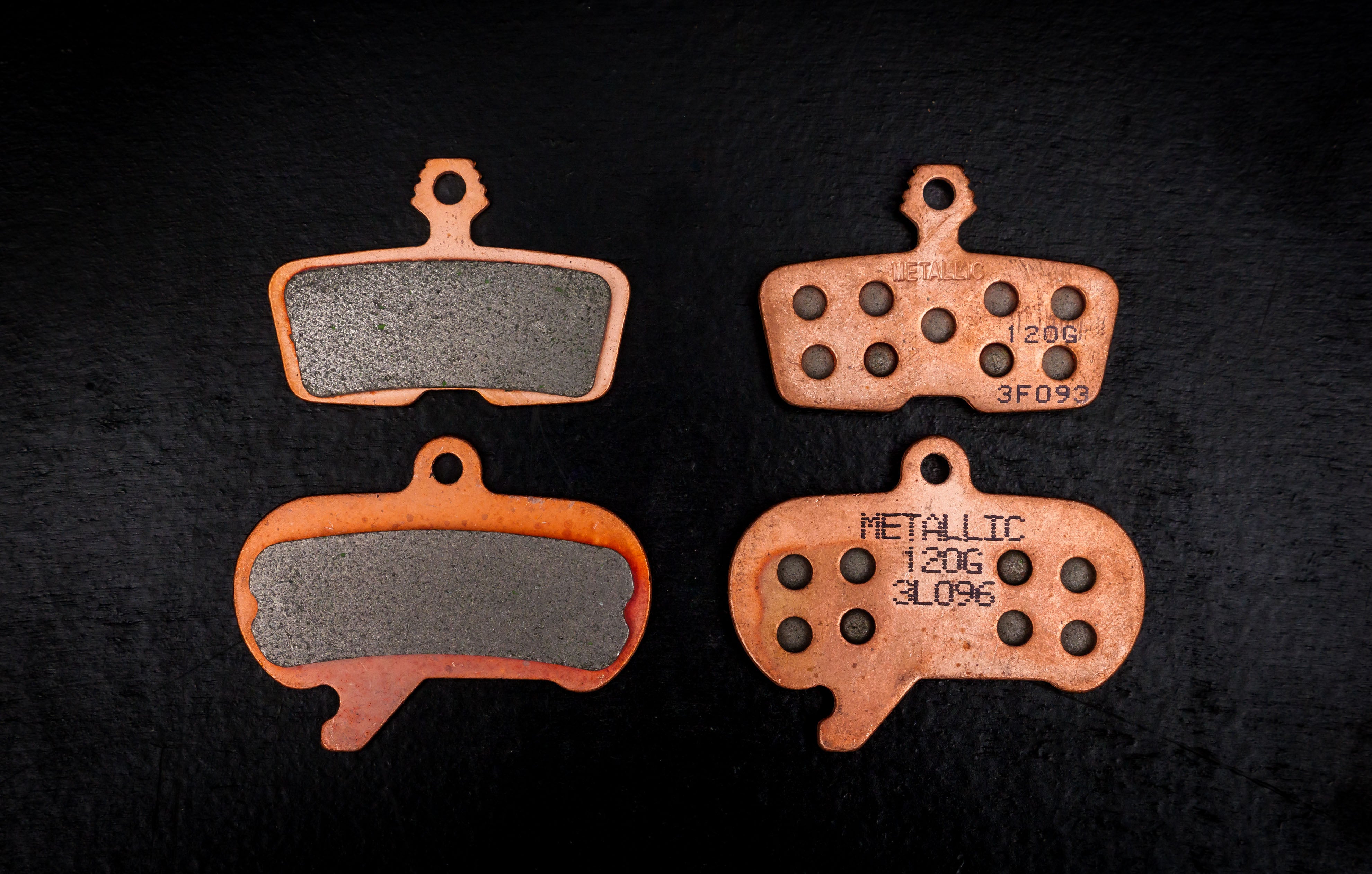
More Power, More Control
While it’s easy to focus only on Maven’s significant power increase over the Code RSC, there is more to this new brake than just pure force alone. The SwingLink cam within the lever body has been refined to deliver a smoother power progression as the lever moves through its stroke with lesser input. The result is a lever pull that takes 32% less force to generate the same braking power as the Code RSC while having more stopping power in-store at its maximum.

Maven Rotor Compatibility
The industry has seen a trend in upsizing rotors to generate more braking power. However, SRAM recommends riders downsize rotors when switching to the stronger Maven brakes as they can create more power and manage heat more efficiently than their previous generation of brakes. The reasoning is that a correctly sized rotor that stays at an optimal temperature is more effective than an oversized rotor that rarely gets up to its functioning temperature.
Maven brakes are compatible with either HS2 or CenterLine rotors.
Mineral Oil / Longer Bleed Intervals
In their quest to create the best gravity-oriented brake possible, SRAM determined that mineral oil performed better than DOT fluid and needed less maintenance in the long term. A proprietary seal material in the caliper maintains an airtight seal regardless of braking forces or temperatures. The full-bleed interval for Maven is once every two years compared to the yearly interval recommended for Code brakes.
Deviating from the DOT 5.1 fluid commonly used in their other offerings, SRAM co-developed Maxima Mineral Brake Oil, and it is the only mineral oil they advise using with Maven brakes.
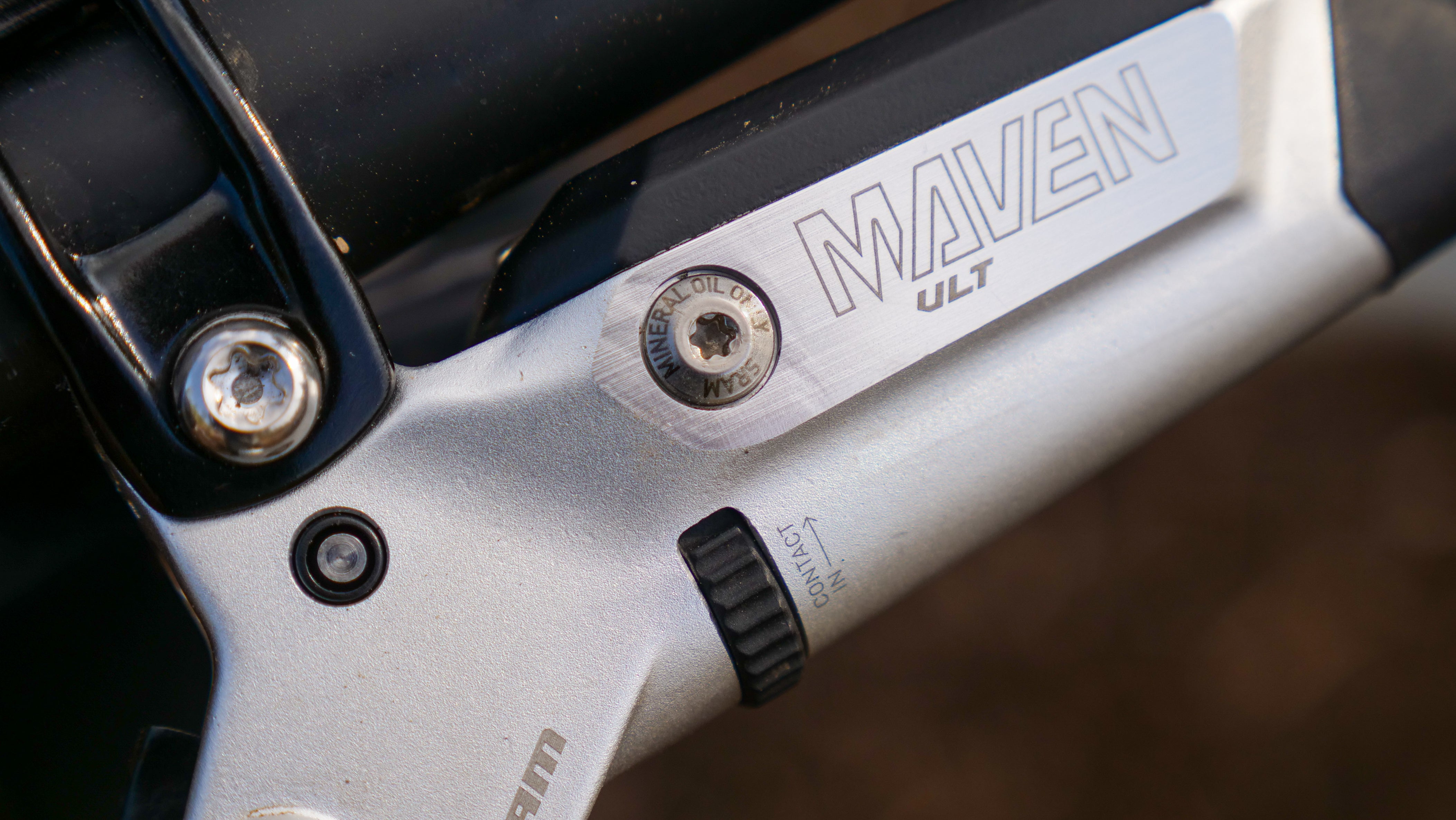
Performance
Riders familiar with a Code RSC’s lever feel will feel right at home with the Maven. The lever pull maintains the typical SRAM feel and weight while ramping its power with less force. The same tool-free reach and contact adjustments carry over from the Code RSC. However, I found the Maven’s contact dial to turn much more freely and consistently than those on the RSC, as well as having a slightly more tangible effect on the overall feel of the brake. The combinations of these two adjustments provide a range of fine-tuning that should suit any hand size and bite-point preference.
Per SRAM’s recommendation, I downsized from a 220mm front and 200mm rear rotor to 200mm and 180mm when installing the Maven brakes. Having just used Code RSC brakes for a few months, I was eager to compare the two directly.

The more progressive uptake of the power is immediately noticeable, as scrubbing off speed took lighter lever inputs than my RSCs had conditioned me. The Mavens still deliver a fantastic level of modulation in the mid-stroke but, at full power, will initiate a skid-inducing jolt that riders better have their heels dropped for. This smooth application of immense stopping power translated into later and shorter braking zones than I am accustomed to with other brakes.
As someone seemingly plagued with hand injuries, the Maven’s ability to supply ample power with less effort was appreciated, especially on sustained descents. While I could most definitely smell the brake pads at the bottom of some steep trails, performance never faded away from me, even with a 180mm rotor on the back. I look forward to getting these brakes to the bike park this summer to see how well they manage on longer bike park descents.
Organic Vs. Metallic Brake Pads
I have always favored SRAM’s metallic pads for their durability, strong grab, and performance in the wet. However, I found that the power and feel of the Maven translate into a very comfortable braking experience with the organic pads installed. They still provide immense top-end power but have a slightly more modular feel in the middle of the pull. The metallic pads retain all of their positive characteristics, with their tremendous grab amplified further by the power of the Maven system.
Models
I have experimented with various 4-piston brakes over the past few seasons but have always found myself returning to the Code RSC as somewhat of a palate cleanser for its consistent lever feel, predictable stopping power, and immense reliability. The Maven picks up where the Code RSC leaves off in SRAM’s lineup, setting a new bar for premium braking performance. The Maven’s smooth lever feel and impressive power make it an ideal option for riders wanting the strongest brake possible and best suits e-bike, enduro, and downhill riding.
More Articles You Might Like
Transition Sentinel Bike Check // Transition Bike Rentals Now at Fanatik
Bike Checks / BK Stancil / Aug 08, 2024
When he’s not working tirelessly to keep our website or ...
Read MoreHow to Assemble a Mountain Bike // Fanatik Custom Build Assembly Guide
How To / BK Stancil / Jul 31, 2024
Read MoreBest Summer MTB Tires // Staff Favorites
Product Guides / BK Stancil / Jul 29, 2024
As July gives way to Augus...
Read MoreView More:


